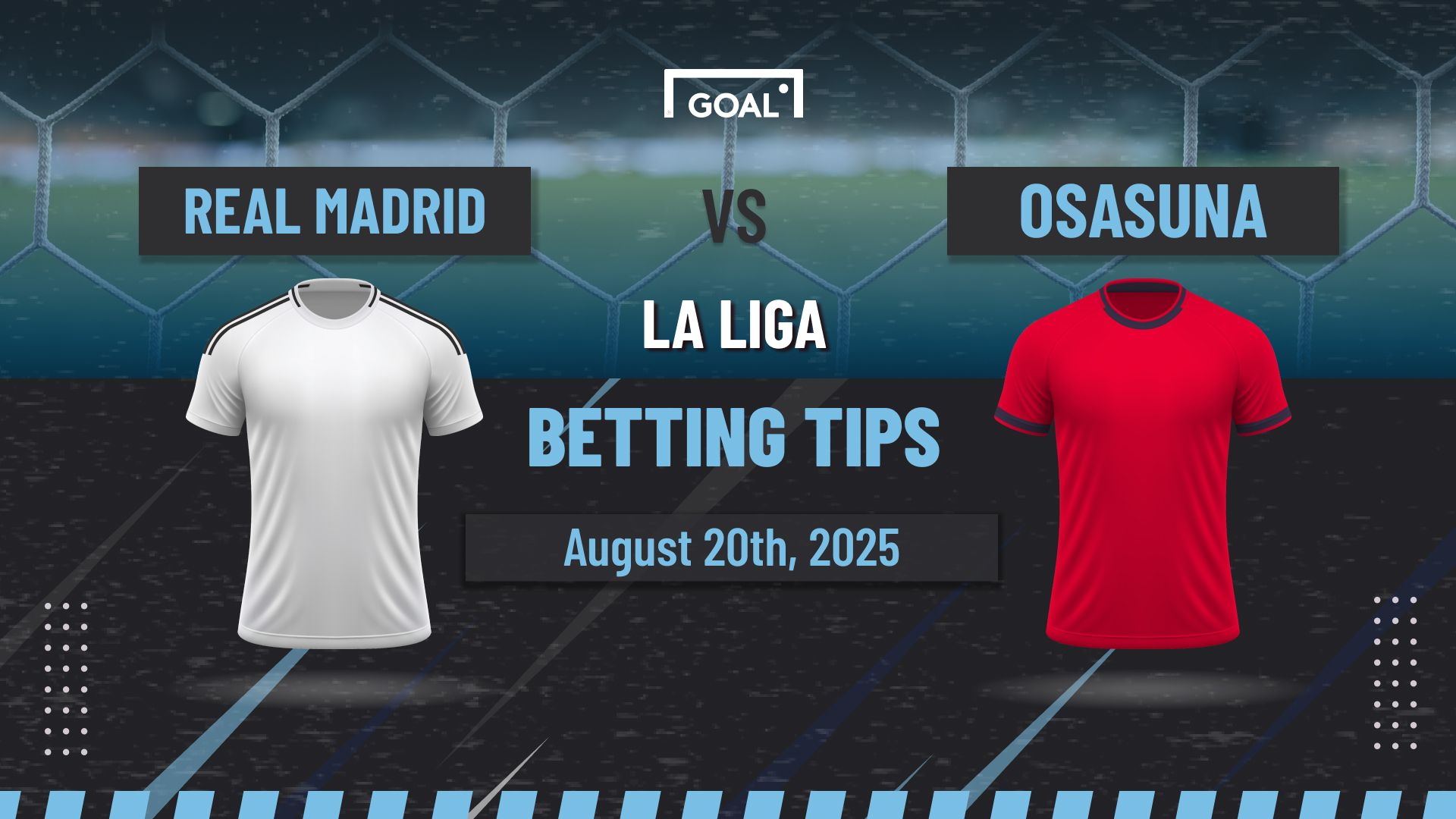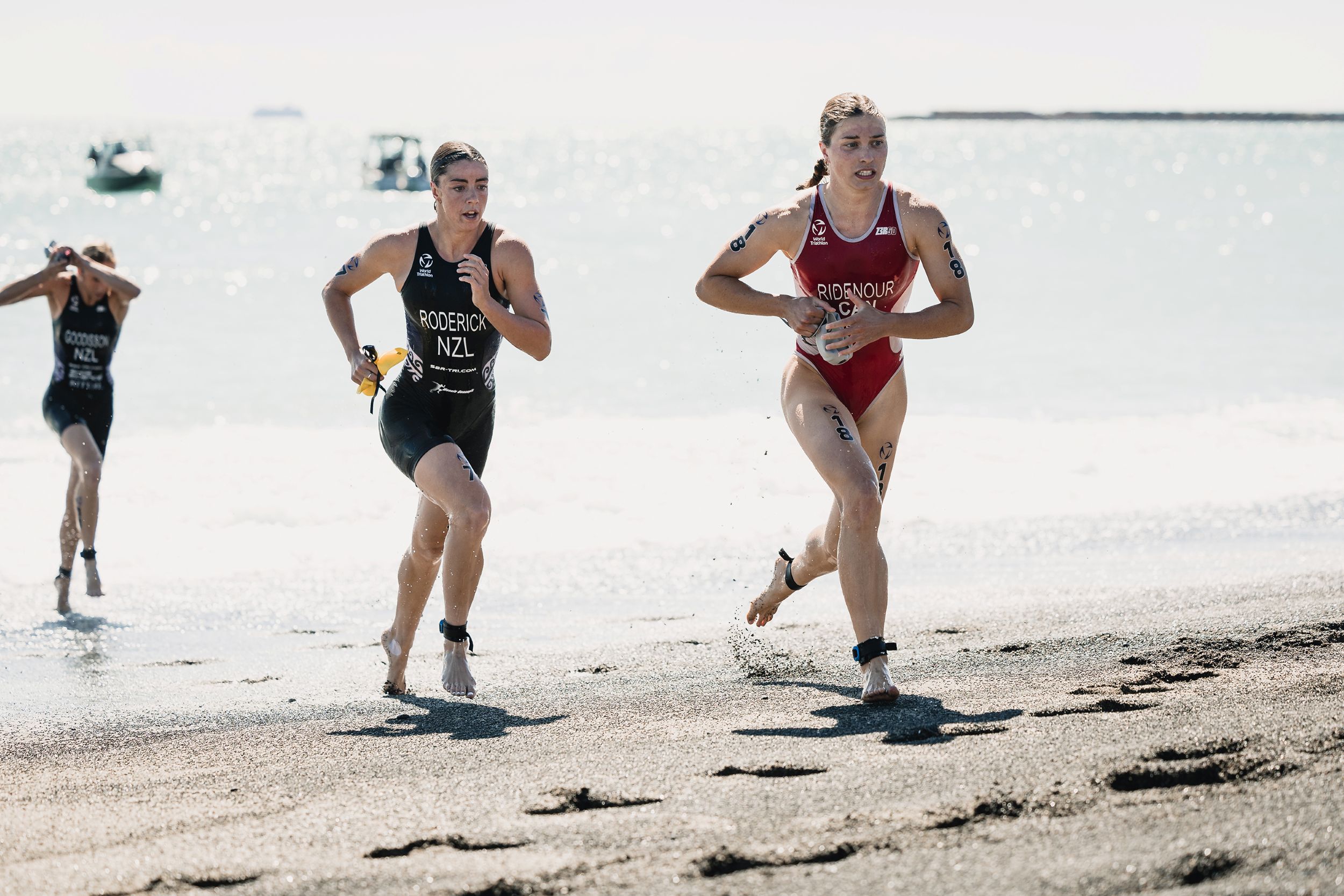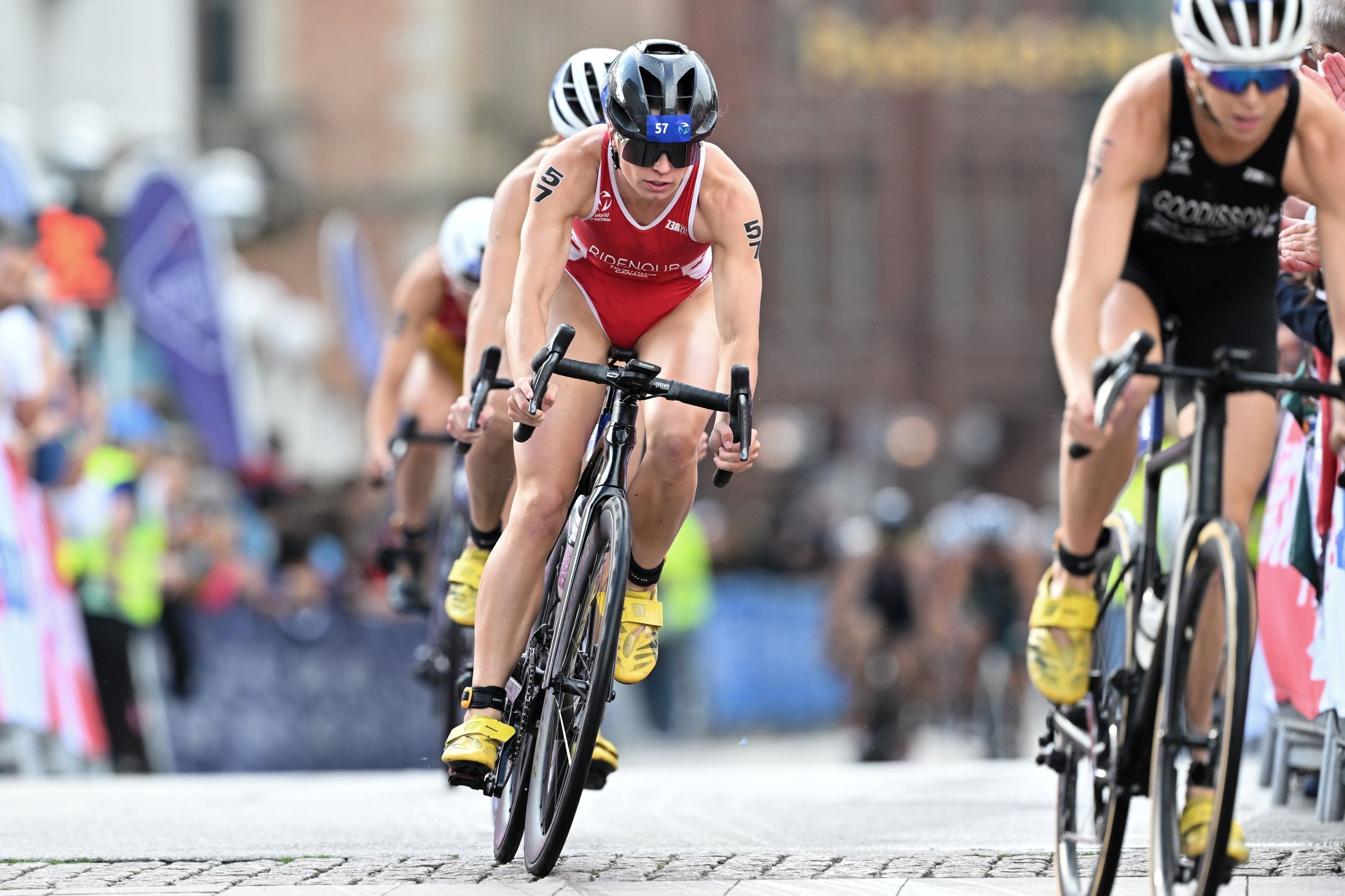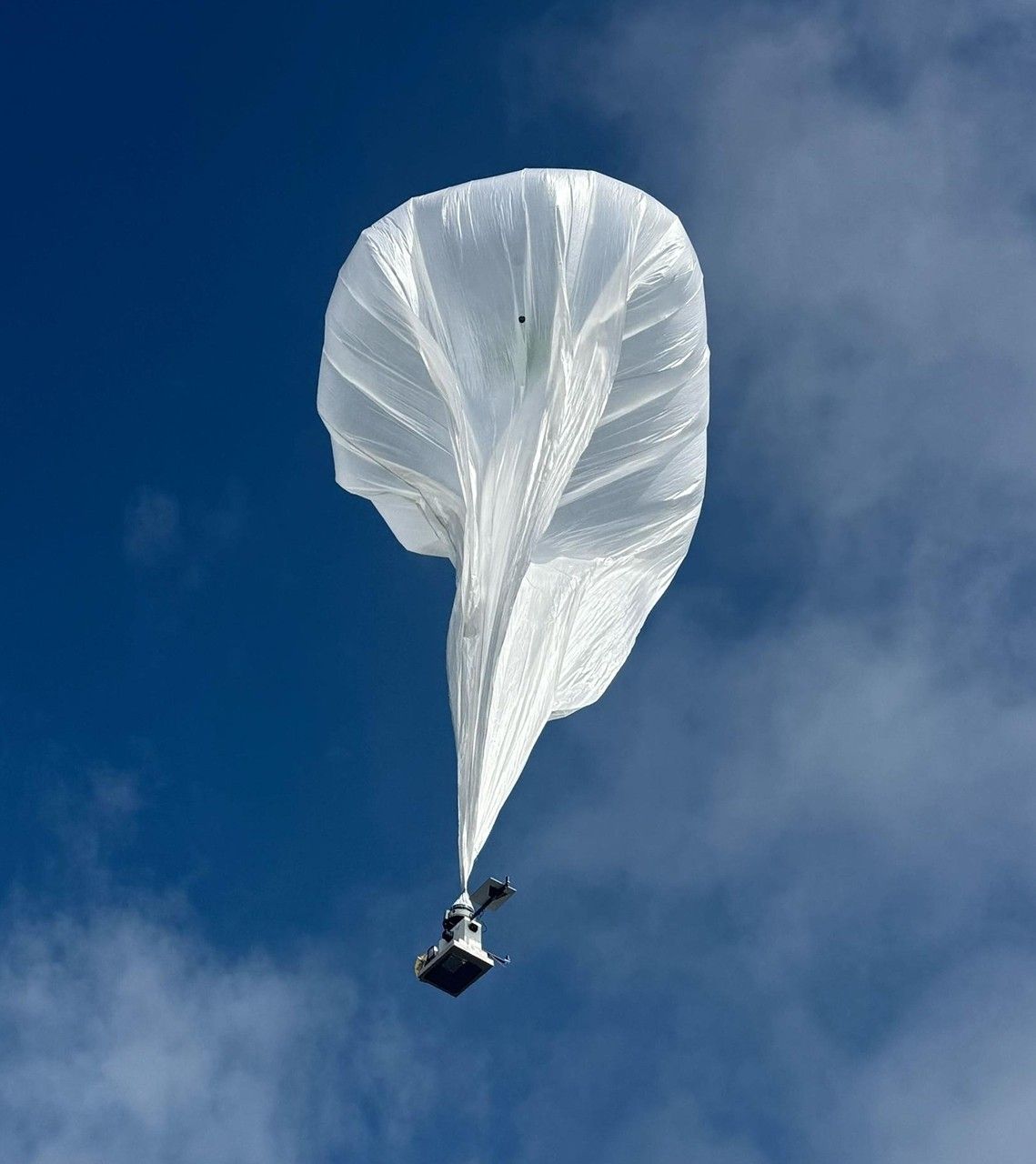Introduction
Diabetes mellitus (DM) has emerged as a global health issue, affecting 589 million adults worldwide in 2024, with projections indicating a staggering rise to 853 million by 2050.1 Of note, the incidence of diabetes mellitus (DM) has soared dramatically in China over the past few decades, establishing the country as a key epicenter of this epidemic.2 Insulin resistance and insufficient insulin secretion are two underlying mechanisms that lead to diabetes development. However, there is no ideal biomarker that can capture this disorder. The role of inflammation in the development of insulin resistance and pancreatic beta-cell dysfunction has been fully confirmed.3,4 It not only creates an inflammatory microenvironment within the pancreas, impairing the insulin secretion capability of beta cells,5 but also induces insulin resistance in insulin-target tissues like the liver, white adipose tissue, and skeletal muscle.6
|
Figure 1 The flow chart of study participants selection.
Abbreviations: FPG, fasting plasma glucose; HbA1C, glycated hemoglobin A1C.
|
As pro-inflammatory cells, neutrophils have been confirmed to contribute critically to the pathogenesis in many chronic inflammatory conditions, including atherosclerosis, diabetes, non-alcoholic fatty liver disease, and autoimmune disorders.7 Additionally, researches indicate that neutrophils are associated with insulin resistance, pancreatic beta-cell dysfunction, and consequently with the development of type 2 diabetes.8 Conversely, high-density lipoprotein cholesterol (HDL-c) is considered to be a protective factor with potent anti-inflammatory effect,9 and it has been recognized as a potential antidiabetic factor by stimulating insulin secretion and cellular glucose uptake.10–13 As a composite biomarker of inflammation, the neutrophil-to-HDL-C ratio (NHR) has been demonstrated to be associated with the incidence of metabolic syndrome14 and various cardiovascular diseases.15,16 However, there remains a scarcity of studies exploring the relationship between NHR and diabetes risk. Therefore, this longitudinal study aimed to examine the relationship between the NHR and new-onset diabetes in a cohort of individuals with normal blood glucose levels. Our findings indicate that elevated NHR was positively associated with an increased risk of diabetes, which may be used as a further valuable marker for early diabetes prediction.
Methods
Study Population
The participants in this study were recruited from individuals who underwent health checkup at the Third Xiangya Hospital of Central South University between January 2017 and March 2024. The current analysis encompassed all study participants who (1) were aged ≥18 years at baseline, (2) completed the first examination between 2017 and 2018, and (3) had made at least three visits between 2017 and 2024 (n=16658). The flowchart of the exclusion criteria in this study is shown in Figure 1. Of the 16658 participants, 3789 participants were excluded according to the exclusion criteria, which were (1) fasting plasma glucose (FPG) ≥6.1mmol/l or glycated hemoglobin A1C (HbA1C) ≥6.5% or with a history of diabetes or pre-diabetes (n=1866), (2) with severe acute and chronic inflammation (n=43), (3) consumption of lipid-lowering drugs (ezetimibe, statins, fibrinogen, and omega-3 fatty acids and cholesterol blockers), antihypertensive drugs or hormone therapies (n=731), (4) with malignant tumors (n=105), (5) with a history of severe cardiovascular, hepatic or renal, diseases (n=52), (6) lack of complete clinical or follow-up data (n=992).
All participants provided their informed consent for the anonymous use of their medical data and biological samples for scientific research purposes. The Ethical Committee of the Third Xiangya Hospital of Central South University approved the present study (Ethics Board Approval Number: F241043), which adhered to the principles outlined in the Declaration of Helsinki (1975).
The Definitions of Diabetes and Study Date
According to the American Diabetes Association’s diagnosis of Diabetes,17 diabetes was diagnosed if participants met ≥1 criterion in the follow-up examinations: 1) diabetes was defined as a fasting blood glucose level ≥126 mg/dL (≥7.0 mmol/L), 2) HbA1c level ≥6.5%; 3) a documented diagnosis of diabetes (ICD-10 code E11–14), or 4) a prescription for any anti-diabetic medication, including insulin, sulfonylureas, metformin, α-glucosidase inhibitors, thiazolidinediones, dipeptidyl peptidase-4 inhibitors, glucagon-like peptide-1 (GLP-1) agonists, sodium-glucose cotransporter-2 inhibitors, or others.
The baseline of the study was defined as the day of the first health checkup (2017–2018). For the participants who developed diabetes during the follow-up period, the endpoint was the date of initial diagnosis. For non-diabetic cases, the endpoint was the last recorded health checkup.
Data Collection and Definition
Standardized questionnaires were used to record medical history and lifestyle factors including smoking status, alcohol consumption, work intensity, emotional state, and habit of exercise for every examination. Exercise habits were defined as engaging in any physical activity ≥1 time/week. The definition of smoking is continuous smoking for more than 6 months at least 1 cigarette per day. The definition of alcohol consumption is an average of ≥1 time per week, with continuous drinking for more than 6 months. Additionally, anthropometric and hemodynamic parameters (body mass index [BMI], systolic blood pressure [SBP], diastolic blood pressure [DBP]) were assessed during the physical examination. Analysis of fasting blood samples collected at baseline: 1) Hematological indicators (white blood cells [WBC], hemoglobin, platelets, neutrophils, lymphocytes, monocytes); 2) Liver enzyme indicators (ALT); 3) Lipid parameters (HDL-c, total cholesterol [TC], triglycerides [TG]); 4) Renal Function Indicators: (Serum uric acid [SUA] and Creatinine [Cr]. NHR values were calculated by dividing the neutrophil counts to HDL-c level. FPG and HbA1c were tested for every examination. Finally, incident diabetes was defined as meeting ≥1 criterion: HbA1c≥6.5%, FPG≥7.0 mmol/L, or self-reported by standardized questionnaires.
Statistical Analysis
The participants were divided into quartile groups (Q1, Q2, Q3, and Q4) according to their NHR values, and the baseline characteristics were compared among the groups. Categorical variables were presented as n (%). Continuous data were summarized as mean ± standard deviation (SD) or median and interquartile ranges [M (IQR)] for normally and non-normally distributed variables, respectively. The comparison of continuous variables across different groups utilized ANOVA with a post hoc Tukey honest significant difference test for normally distributed data, the Kruskal–Wallis test or the Wilcoxon rank-sum test for continuous data with non-normal distribution and Chi-square tests for categorical variables. To evaluate the association between the NHR and the incidence of diabetes, we estimated and compared diabetes incidence by the Kaplan–Meier method and the Log rank test. Multivariate Cox proportional hazards regression models were to assess NHR as an independent predictor of diabetes, after adjusting for confounders including age, gender, BMI, systolic blood pressure, total cholesterol, triglycerides, LDL-c, smoking status, alcohol consumption, exercise participation, job type, number of working days per week, sedentary time outside of work hours, sleep quality, adverse emotions, and family history of diabetes. The area under the receiver operating characteristic (ROC) curves quantified the predictive capacity of NHR for diabetes incidence. We further assessed the incremental predictive value from adding the NHR to FPG to predict diabetes risk. Subgroup analyses were conducted by a stratified Cox proportional hazards regression model. We adjusted for all factors within each stratification, including age, gender, BMI, SBP, TC, TG, LDL-c, smoking status, alcohol consumption, exercise participation, job type, number of working days per week, sedentary time outside of work hours, sleep quality, adverse emotions, and family history of diabetes, but not adjusted for stratification variables in each model. All tests were two-sided, and a p-value <0.05 was considered statistically significant. The missing data for the variables in the analyses were imputed using mean/median/mode imputation.
All statistical analyses were conducted using SPSS version 29.0 software (IBM Corporation, Chicago, IL, USA).
Results
Baseline Characteristics
The baseline characteristics of the participants grouped according to quartiles of the NHR are detailed in Table 1. The mean age of the subjects was 39.62±11.33 (18–90) years, and 5,717 (44.42%) participants were male. Participants in the top quartile of NHR were more likely the male and had a higher percentage of smokers and drinkers, a higher proportion engaged in mental work or working more than 5 days a week or sedentary time outside work exceeding 4 hours and had higher BMI, WBC, hemoglobin, platelet count, neutrophil count, monocyte count, lymphocyte count, SBP, FPG, TG, SUA, Cr, ALT (P < 0.05). Participants in the bottom quartile of NHR were more likely to have a lower percentage of smokers and drinkers, a higher proportion engaged in working less than 5 days a week or participation in physical activity or sedentary time outside work less than 2 hours and have lower BMI, WBC count, hemoglobin, platelet count, neutrophil count, monocyte count, lymphocyte count, SBP, FPG, TG, SUA, Cr, and ALT (P < 0.05).
 |
Table 1 Baseline Characteristics of the Study Participants According to the NHR
|
The Predictive Value of NHR for Diabetes Incidence
The participants were followed up for an average duration of 5.11 ± 0.95 years (ranging from 3 to 7 years), and the average diabetes incidence rate was 3.16%. To investigate the impact of varying NHR levels on the cumulative probability of developing diabetes mellitus (DM), a Kaplan–Meier analysis was conducted. As depicted in Figure 2, the cumulative incidence of diabetes in the upper quartile of NHR was notably higher than that in the lower quartile. Statistical significance between these groups was confirmed by the Log rank test (χ2 = 77.923, P < 0.01). Consistently, the Q4 group exhibited the highest diabetes incidence rate of 5.59%, which was 6.5 times higher compared to the Q1 group.
 |
Figure 2 The estimated cumulative incidence of diabetes mellitus according to the NHR. Kaplan–Meier curves for the cumulative diabetes probability according to different NHR. Q1<1.91; Q2: 1.91–2.52; Q3: 2.52–3.34; Q4>3.34. NHR, neutrophil to high density lipoprotein cholesterol ratio; Cumulative incidence is 1-survival rate. p-value is from the Log rank test.
|
To further examine the association of NHR with diabetes incidence, we developed three Cox proportional hazards regression models as shown in Table 2. In Model 1 and Model 2, the NHR was a significant factor for diabetes development. After adjustment for additional confounders in Model 3, this association remained significant for NHR analyzed as both a categorical and continuous variable. The test for trends across quartiles of the NHR for the risk of diabetes was statistically significant (P for trend < 0.001) in both the whole population and male/female subgroups (Tables S1–S2). Furthermore, neutrophils and HDL-C, when considered as individual biomarkers, were also significant independent factors for diabetes development (Table S3). In addition, when we set the lowest quartile as a reference, the highest quartile of NHR was distinctly associated with increased risk of diabetes (Crude model, Q4: HR=5.45, 95% CI: 3.45–8.60, P < 0.001) (Model 1, Q4: HR=4.50, 95% CI: 2.81–7.22, P < 0.001), (Model 2, Q4: HR=2.71, 95% CI: 1.64–4.48, P < 0.001) (Model 3, Q4: HR=2.80, 95% CI: 1.64–4.79, P < 0.001).
 |
Table 2 Cox Proportional Hazards Regression Results for Diabetes Incidence According to the NHR
|
To assess the discrimination and reclassification of NHR with and without FPG for the prediction of diabetes. We examined the area under the curves (AUCs) of FPG, NHR, and the combination of NHR and FPG. As illustrated in Figure 3, FPG demonstrates superior predictive capability compared to the NHR. The AUCs obtained from the receiver operating characteristic (ROC) analyses were 0.735 (95% CI: 0.702–0.771, p < 0.001) for FPG, 0.669 (95% CI: 0.63–0.70, p < 0.001) for NHR, and 0.768 (95% CI: 0.739–0.802, p < 0.001) for the combination of NHR and FPG, respectively. Based on the highest Youden’s index,18,19 the optimal thresholds were 5.51 for FPG and 3.25 for NHR. For the combination of NHR and FPG, the optimal FPG and NHR thresholds were 5.55 and 1.69, respectively. Additionally, we found that the area under the ROC curve of NHR is larger than that of neutrophils (AUC =0.669, 95% CI: 0.63–0.70 vs AUC = 0.591, 95% CI: 0.560–0.632), but smaller than that under the ROC curve of HDL-c (AUC = 0.669, 95% CI: 0.63–0.70 vs AUC = 0.690, 95% CI: 0.662–0.729). To determine if there were significant differences between these ROC curves, we conducted pairwise comparisons using DeLong’s test. In all comparisons, the p-values were less than 0.01.
 |
Figure 3 ROC curves of NHR, FPG and the combination of FPG and NHR to predict type 2 diabetes mellitus (T2DM). a, the p value of the combination of FPG and NHR compared with FPG. b, the p value of the FPG compared with NHR.
|
The Predictive Value of NHR for Diabetes Incidence in Various Subgroups
To investigate whether the predictive value of the NHR index was remained consistent across participants with varying demographic characteristics, various subgroup analyses were performed (Figure 4). Our findings revealed that the NHR serves as a notable predictor of the development of new diabetes regardless of gender, age, BMI, smoking status, emotional distress, occupation type or weekly working duration. Among those who engaged in physical activity have good sleep quality, without a family history of diabetes or never drink, the predictive ability of the NHR was more prominent. Further subgroup analyses showed no significant interactions between NHR and gender, BMI, smoking status, alcohol consumption, participation in exercise, sleep quality, occupation type or weekly working duration. However, it was observed that age and adverse emotions could modify the relationship between NHR and diabetes incidence (All P for interaction <0.05). Specifically, a stronger association was shown in the subjects with age ≥ 40y (HR =1.25, 95% CI 1.09–1.42) and the individuals sometimes or frequently experience anxiety (HR =1.46, 95% CI 1.20–1.78) or depression (HR=1.39, 95% CI 1.16–1.65). In contrast, weaker association was detected in the subjects with age < 40y (HR=1.24, 95% CI 1.07–1.45), participants rarely experience anxiety (HR=1.16, 95% CI 1.03–1.31) or depression (HR=1.17, 95% CI 1.03–1.32) (Figure 4).
 |
Figure 4 Subgroup analyses for the association of NHR index with new onset of diabetes. Model 1: Adjusted for age and gender; Model 2: Adjusted for BMI, systolic blood pressure, total cholesterol, triglycerides, and LDL-C on the basis of Model 1; Model 3: Adjusted for smoking, alcohol consumption, physical exercise, job type, working days, sedentary time outside of work, sleep quality, adverse emotions, and family history of diabetes on the basis of Model 2.
Abbreviations: HR, Hazard Ratio; CI, Confidence Interval.
|
Discussions
This large population-based retrospective cohort provides the first evidence that elevated NHR is an independent predictor of T2DM incidence. Even after adjustment for the association potential confounding risk factors, a distinct and independent correlation between the NHR and diabetes development remained. Considering preventability and the substantial benefits of early intervention of T2DM, this simple and practical indicator offers the potential for early identification or intervention strategies to significantly slow down or even prevent the transition from normoglycemia to diabetes on a large scale.
T2DM has emerged as a significant global threat. Our study demonstrated that the average incidence rate of diabetes was 3.16%, which is consistent with previous research findings. Yan et al in 2019 reported the 5-year incidence of type 2 diabetes in Chinese adults is 3.8%.20 It is marginally higher than our findings. In contrast to their study, which included individuals with prediabetes, our investigation exclusively enrolled participants with normal blood glucose levels at baseline, thereby focusing on the early identification of diabetes risk factors in a normoglycemic population. Additionally, Man et al in 2017 demonstrated a cumulative incidence rate of Type 2 diabetes mellitus (T2DM) of 3.2% over a six-year follow-up period in a normoglycemic Singaporean Malay cohort, a figure which is close to the incidence rates observed in our study.21 This consistency in results across distinct ethnic cohorts strengthens the generalizability of the findings. Furthermore, it is worth noting that our research spanned from 2017 to 2024, during which the world experienced the global pandemic of the coronavirus disease 2019 (COVID-19). Increased incidence of new-onset diabetes and dyslipidemia has been documented in patients following a COVID-19 diagnosis.22,23 However, our research indicated that the diabetes incidence had not increased compared to the pre-pandemic period. This situation might be due to the increased testing during the diagnosis and treatment of COVID-19,24 which may lead to an increase in the diagnosis of diabetes and hyperlipidemia.
In the pathogenesis of type 2 diabetes mellitus (T2DM) among the Chinese population, both insulin resistance and decline in insulin secretion function play pivotal roles.2 Methods such as the hyperinsulinemic-euglycemic clamp technique or the oral glucose tolerance test (OGTT) combined with insulin release tests have been proposed to measure insulin resistance or insulin secretion function. However, their applicability is limited due to their complexity or cumbersome calculations. Emerging evidence has established diabetes as a chronic inflammatory condition, with persistent low-grade inflammation contributing significantly to the pathogenesis of insulin resistance and pancreatic β-cell impairment.4 Furthermore, Inflammation affects all-cause and cause-specific mortality in patients with diabetes or prediabetes.25 The NHR, as a novel inflammatory biomarker, has been established as a new biomarker for predicting the peripheral arterial disease26 and the presence, progression, and severity of ACS in T2DM population.27 What’s more, higher NHR emerged as a predictor of adverse clinical endpoints in COVID-19 patients with diabetes.28 Clinical investigations also revealed that NHR levels are markedly elevated in metabolic syndrome (MetS) patients, and show strong associations with key cardio-metabolic parameters and insulin resistance.14,29 Consistent with previous studies, our results demonstrate a significant association between NHR and diabetes incidence. Interestingly, studies have shown a U-shaped relationship between HDL-C and the risk of cardiovascular events.30 Unlike this, our research found that NHR did not show a U-shaped relationship with the risk of diabetes. Instead, the incidence of diabetes increased with the increase of NHR. What’s more, we found that adding NHR to FPG significantly enhanced diabetes risk discrimination and reclassification in healthy adults. Therefore, even the area under the ROC curve of NHR is smaller than under the ROC curve of HDL-c, NHR is a relatively more practical indicator in assisting in predicting the risk of diabetes. Evaluating this ratio may assist in identifying individuals at risk of transitioning to diabetes and facilitating the planning of lifestyle adjustments. However, in the natural history of diabetes development, whether NHR elevation precedes the onset of insulin resistance and β-cell dysfunction or whether it differentially relates to the development of diabetes dominated by insulin resistance or impaired insulin secretion, remains to be further investigated.
The precise mechanisms linking elevated NHR to increased diabetes risk remain unclear, although it appears to be a relatively reliable indicator of MetS and insulin resistance. Experimental studies have shown that neutrophil count, as part of NHR, interact directly with CD11b and ICAM-1 on adipocytes,31 leading to an increased expression of IL-1β. The elevated secretion of IL-1β promotes macrophage infiltration, exacerbating inflammation in adipose tissue and ultimately contribute to the development of insulin resistance.32 Additionally, neutrophils can also impair insulin signaling through the nitrosylation of the β subunit of the insulin receptor and the degradation of insulin receptor substrate, as a result of the release of myeloperoxidase (MPO)33 and neutrophil elastase (NE).34 HDL-c, another component of NHR, was shown to modulate pancreatic beta-cell function and enhance insulin sensitivity through endoplasmic reticulum (ER) stress reduction and inhibiting apoptosis.35 Clinical trials have shown that HDL-c and apoA-I modulation, whether through acute rHDL infusion or chronic CETP inhibition, improves glycemic control in type 2 diabetes patients.36 Furthermore, Studies show HDL-c modulates neutrophil activity by suppressing proliferation and migration.37 However, the roles of neutrophils and HDL-c in the processes of insulin resistance and islet secretory dysfunction remain inadequately elucidated and require further investigation and confirmation, particularly in clinical studies.
Metabolic inflammation tends to escalate with advancing age, and adoption of unhealthy lifestyles, including insufficient physical activity.38,39 Contrary to expectations, our study revealed no notable elevation in diabetes risk associated with a higher NHR among alcohol consumers. This finding is in line with the research by Llamosas-Falcón et al, which indicates that moderate alcohol consumption decreases diabetes risk, whereas excessive drinking elevates it.40 The protective effect of alcohol may offset the influence of NHR. Nevertheless, among individuals who are physically active or have good sleep quality, a higher NHR was associated with an increased risk of diabetes, whereas this was not observed in inactive or poorly sleeping individuals. Low physical activity and poor sleep quality, which are linked to elevated levels of C-reactive protein (CRP) and cytokines due to obesity or impaired inflammatory metabolism, exacerbate the risk of inflammatory diseases such as diabetes.41 Short sleep duration is also associated with inflammation, oxidative stress, as well as increased risks of type 2 diabetes mellitus (T2DM).42 This could potentially be attributed to the disruption of immune and inflammatory regulation resulting from inadequate exercise and poor sleep quality, which in turn diminishes the predictive effect of NHR. Research indicates that engaging in regular physical activity can prevent diabetes and enhance sleep quality. However, self-reported sleep quality assessments require corroboration through objective measurement tools for accuracy.
Subgroup analysis by age indicated a stronger association of NHR with diabetes incidence in individuals with age (≥40 years old). Conversely, the relationship was weaker in those younger than 40 years of age. It is consistent with previous research emphasizing age as a critical risk factor for diabetes43 and its impact on both neutrophil44 and HDL-c45 levels. By subgroup analysis, we also found that the incidence of new-onset diabetes in the subgroup with anxiety or depression was higher than in the other subgroup, though psychological status was assessed using individuals completing health questionnaires, rather than standardized psychological assessment scales. Prior studies have suggested that anxiety and depression, prevalent mental disorders may contribute to diabetes through excessive HPA axis activity and insulin resistance.46
This study has certain limitations. First, the absence of 2-hour post-OGTT blood glucose for diagnosing at baseline and follow-up in this study potentially compromised the accuracy of the results. At baseline, the deficiency of 2-hour post-OGTT blood glucose may lead to the accidental inclusion of patients with hyperglycemia after glucose loading as the normal blood glucose population in this study. During the follow-up process, diabetic patients diagnosed solely based on hyperglycemia after glucose loading may be missed. Subsequent studies will further investigate the relationship between NHR and the incidence of diabetes in the healthy physical examination population who regularly complete the OGTT examination. Second, China ranks as one of the nations with the lowest incidence rates of Type 1 Diabetes Mellitus (T1DM), exhibiting an incidence rate of roughly 1.01 cases per 100,000 people per year.47 As a result, the probability of encountering T1DM cases within the scope of this study is deemed minimal. Third, NHR was only obtained at the baseline examination, it was impossible to consider the impact of fluctuating changes or the cumulative exposure on the diabetes incidence during the follow-up period. The impact of cumulative NHR exposure or fluctuations on the occurrence of diabetes needs to be further studied. Lastly, not all the participants had an annual physical examination every year, which may introduce bias in determining the date of diabetes diagnosis and consequently affect the accuracy of the cumulative occurrence rate of diabetes. Nevertheless, our study has certain advantages compared to other studies. We adopted a conservative methodology to mitigate potential biases. We excluded participants using lipid-lowering, antihypertensive, antihypertensive drugs, or hormone therapies due to the established diabetogenic potential of agents like some statins, beta-blockers, hormone therapies, or thiazide diuretics.48,49 Angiotensin converting enzyme inhibitors or omega-3 fatty acids could affect the study results by intervening in glucose or lipid metabolism.50 Additionally, this study comprises a stable and substantial cohort sourced from our hospital’s routine health examination population. The median follow-up duration was 5.1 years, which was relatively long. Given that chronic diseases, including diabetes, necessitate a considerable period from exposure to clinical onset, a sufficiently extended follow-up period is crucial for conducting a favorable analysis of the association.
Conclusions
Our results strongly suggested that NHR serves as an independent predictor for diabetes development in normoglycemic Chinese individuals. Monitoring the NHR as a qualified predictor and risk stratification tool deserves more attention in clinical practice for the ones with normoglycemia.
Acknowledgment
We thank Qian Chen for her help in programming and statistical analyses as well as all participants for their contribution.
Author Contributions
All authors contributed to data analysis, drafting or revising the article, have agreed on the journal to which the article will be submitted, gave final approval of the version to be published, and agree to be accountable for all aspects of the work.
Funding
Our work was funded by the grants from the National Natural Science Foundation of China No. 82470446 to YaPei Li), Natural Science Foundation of Hunan Province (No. 2025JJ50526 to Zi Chen, No. 2022JJ20091 to YaPei Li).
Disclosure
The authors declare that the research was conducted in the absence of any commercial or financial relationships that could be construed as a potential conflict of interest.
References
1. Genitsaridi I, Salpea P, Salim A, et al. Idf diabetes atlas: global, regional and national diabetes prevalence estimates for 2024 and projections for 2050.
2. Ke C, Narayan KMV, Chan JCN, Jha P, Shah BR. Pathophysiology, phenotypes and management of type 2 diabetes mellitus in Indian and Chinese populations. Nat Rev Endocrinol. 2022;18(7):413–432. doi:10.1038/s41574-022-00669-4
3. Galicia-Garcia U, Benito-Vicente A, Jebari S, et al. Pathophysiology of type 2 diabetes mellitus. Int J Mol Sci. 2020;21(17):6275. doi:10.3390/ijms21176275
4. Donath MY. Targeting inflammation in the treatment of type 2 diabetes: time to start. Nat Rev Drug Discov. 2014;13(6):465–476. doi:10.1038/nrd4275
5. Eguchi K, Nagai R. Islet inflammation in type 2 diabetes and physiology. J Clin Invest. 2017;127(1):14–23. doi:10.1172/JCI88877
6. Chen L, Chen R, Wang H, Liang F. Mechanisms linking inflammation to insulin resistance. Int J Endocrinol. 2015;2015:508409. doi:10.1155/2015/508409
7. Herrero-Cervera A, Soehnlein O, Kenne E. Neutrophils in chronic inflammatory diseases. Cell Mol Immunol. 2022;19(2):177–191. doi:10.1038/s41423-021-00832-3
8. Lee CT, Harris SB, Retnakaran R, et al. White blood cell subtypes, insulin resistance and β-cell dysfunction in high-risk individuals–the PROMISE cohort. Clin Endocrinol. 2014;81(4):536–541. doi:10.1111/cen.12390
9. McGrath KC, Li XH, Whitworth PT, et al. High density lipoproteins improve insulin sensitivity in high-fat diet-fed mice by suppressing hepatic inflammation. J Lipid Res. 2014;55(3):421–430. doi:10.1194/jlr.M043281
10. Fiorentino TV, Succurro E, Marini MA, et al. HDL cholesterol is an independent predictor of β-cell function decline and incident type 2 diabetes: a longitudinal study. Diabetes Metab Res Rev. 2020;36(4):e3289. doi:10.1002/dmrr.3289
11. Cao C, Hu H, Zheng X, Zhang X, Wang Y, He Y. Non-linear relationship between high-density lipoprotein cholesterol and incident diabetes mellitus: a secondary retrospective analysis based on a Japanese cohort study. BMC Endocr Disord. 2022;22(1):163. doi:10.1186/s12902-022-01074-8
12. Khedr D, Hafez M, Lumpuy-Castillo J, et al. Lipid biomarkers as predictors of diastolic dysfunction in diabetes with poor glycemic control. Int J Mol Sci. 2020;21(14):5079. doi:10.3390/ijms21145079
13. Xepapadaki E, Nikdima I, Sagiadinou EC, Zvintzou E, Kypreos KE. HDL and type 2 diabetes: the chicken or the egg? Diabetologia. 2021;64(9):1917–1926. doi:10.1007/s00125-021-05509-0
14. Jialal I, Jialal G, Adams-Huet B, Ramakrishnan N. Neutrophil and monocyte ratios to high-density lipoprotein-cholesterol and adiponectin as biomarkers of nascent metabolic syndrome. Hormone Mol Biol Clin Invest. 2020;41(2). doi:10.1515/hmbci-2019-0070
15. Huang JB, Chen YS, Ji HY, et al. Neutrophil to high-density lipoprotein ratio has a superior prognostic value in elderly patients with acute myocardial infarction: a comparison study. Lipids Health Dis. 2020;19(1):59. doi:10.1186/s12944-020-01238-2
16. Başyiğit F, Çöteli C. Relationship between the neutrophil to HDL-C ratio and anatomical significance of coronary artery stenosis in patients with documented myocardial ischemia. Eur Rev Med Pharmacol Sci. 2022;26(9):3179–3184. doi:10.26355/eurrev_202205_28735
17. ElSayed NA, Aleppo G, Bannuru RR. 2. Diagnosis and classification of diabetes: standards of care in diabetes—2024. Diabetes Care. 2024;47(Suppl 1):S20–s42. doi:10.2337/dc24-S002
18. Hosseini Mojahed F, Aalami AH, Pouresmaeil V, Amirabadi A, Qasemi Rad M, Sahebkar A. Clinical evaluation of the diagnostic role of MicroRNA-155 in breast cancer. Int J Genomics. 2020;2020:9514831. doi:10.1155/2020/9514831
19. Santulli G, Pascale V, Finelli R, et al. We are what we eat: impact of food from short supply chain on metabolic syndrome. J Clin Med. 2019;8(12):2061. doi:10.3390/jcm8122061
20. Yan G, Li F, Elia C, et al. Association of lipid accumulation product trajectories with 5-year incidence of type 2 diabetes in Chinese adults: a cohort study. Nutr Metab. 2019;16(1):72. doi:10.1186/s12986-019-0399-7
21. Man REK, Charumathi S, Gan ATL, et al. Cumulative incidence and risk factors of prediabetes and type 2 diabetes in a Singaporean Malay cohort. Diabetes Res Clin Pract. 2017;127:163–171. doi:10.1016/j.diabres.2017.03.007
22. Wrona M, Skrypnik D. New-onset diabetes mellitus, hypertension, dyslipidaemia as sequelae of COVID-19 infection-systematic review. Int J Environ Res Public Health. 2022;19(20):13280. doi:10.3390/ijerph192013280
23. Metwally AA, Mehta P, Johnson BS, Nagarjuna A, Snyder MP. COVID-19-induced new-onset diabetes: trends and technologies. Diabetes. 2021;70(12):2733–2744. doi:10.2337/dbi21-0029
24. Ilic I, Ilic M. Diabetes mellitus after SARS-CoV-2 infection: an epidemiological review. Life. 2023;13(6):1233. doi:10.3390/life13061233
25. Liu J, Chen K, Tang M, et al. Oxidative stress and inflammation mediate the adverse effects of cadmium exposure on all-cause and cause-specific mortality in patients with diabetes and prediabetes. Cardiovasc Diabetol. 2025;24(1):145. doi:10.1186/s12933-025-02698-5
26. Song Y, Zhao Y, Shu Y, et al. Combination model of neutrophil to high-density lipoprotein ratio and system inflammation response index is more valuable for predicting peripheral arterial disease in type 2 diabetic patients: a cross-sectional study. Front Endocrinol. 2023;14:1100453. doi:10.3389/fendo.2023.1100453
27. Ren H, Zhu B, Zhao Z, et al. Neutrophil to high-density lipoprotein cholesterol ratio as the risk mark in patients with type 2 diabetes combined with acute coronary syndrome: a cross-sectional study. Sci Rep. 2023;13(1):7836. doi:10.1038/s41598-023-35050-6
28. Wang Y, Zhang J, Li H, et al. Prognostic value of leucocyte to high-density lipoprotein-cholesterol ratios in COVID-19 patients and the diabetes subgroup. Front Endocrinol. 2021;12:727419. doi:10.3389/fendo.2021.727419
29. Chen T, Chen H, Xiao H, et al. Comparison of the value of neutrophil to high-density lipoprotein cholesterol ratio and lymphocyte to high-density lipoprotein cholesterol ratio for predicting metabolic syndrome among a population in the Southern Coast of China. Diabetes, Metabolic Syndrome Obesity. 2020;13:597–605. doi:10.2147/DMSO.S238990
30. Trimarco V, Izzo R, Morisco C, et al. High HDL (High-Density Lipoprotein) cholesterol increases cardiovascular risk in hypertensive patients. Hypertension. 2022;79(10):2355–2363. doi:10.1161/HYPERTENSIONAHA.122.19912
31. Elgazar-Carmon V, Rudich A, Hadad N, Levy R. Neutrophils transiently infiltrate intra-abdominal fat early in the course of high-fat feeding. J Lipid Res. 2008;49(9):1894–1903. doi:10.1194/jlr.M800132-JLR200
32. Watanabe Y, Nagai Y, Honda H, et al. Bidirectional crosstalk between neutrophils and adipocytes promotes adipose tissue inflammation. FASEB J. 2019;33(11):11821–11835. doi:10.1096/fj.201900477RR
33. Nessler K, Grzybczak R, Nessler M, Zalewski J, Gajos G, Windak A. Associations between myeloperoxidase and paraoxonase-1 and type 2 diabetes in patients with ischemic heart disease. BMC Cardiovasc Disord. 2022;22(1):521. doi:10.1186/s12872-022-02928-8
34. Talukdar S, Oh DY, Bandyopadhyay G, et al. Neutrophils mediate insulin resistance in mice fed a high-fat diet through secreted elastase. Nature Med. 2012;18(9):1407–1412. doi:10.1038/nm.2885
35. Chapman MJ. HDL functionality in type 1 and type 2 diabetes: new insights. Curr Opinionendocrinol Diabetes Obesity. 2022;29(2):112–123. doi:10.1097/MED.0000000000000705
36. Drew BG, Duffy SJ, Formosa MF, et al. High-density lipoprotein modulates glucose metabolism in patients with type 2 diabetes mellitus. Circulation. 2009;119(15):2103–2111. doi:10.1161/CIRCULATIONAHA.108.843219
37. Curcic S, Holzer M, Frei R, et al. Neutrophil effector responses are suppressed by secretory phospholipase A2 modified HDL. BBA. 2015;1851(2):184–193. doi:10.1016/j.bbalip.2014.11.010
38. Lankila H, Kekäläinen T, Hietavala EM, Laakkonen EK. A mediating role of visceral adipose tissue on the association of health behaviours and metabolic inflammation in menopause: a population-based cross-sectional study. Sci Rep. 2025;15(1):1999. doi:10.1038/s41598-025-85134-8
39. Franceschi C, Garagnani P, Parini P, Giuliani C, Santoro A. Inflammaging: a new immune-metabolic viewpoint for age-related diseases. Nat Rev Endocrinol. 2018;14(10):576–590. doi:10.1038/s41574-018-0059-4
40. Llamosas-Falcón L, Rehm J, Bright S, et al. The relationship between alcohol consumption, BMI, and type 2 diabetes: a systematic review and dose-response meta-analysis. Diabetes Care. 2023;46(11):2076–2083. doi:10.2337/dc23-1015
41. Piotrowska K, Zgutka K, Tkacz M, Tarnowski M. Physical activity as a modern intervention in the fight against obesity-related inflammation in type 2 diabetes mellitus and gestational diabetes. Antioxidants. 2023;12(8):1488. doi:10.3390/antiox12081488
42. Vgontzas AN, Zoumakis E, Bixler EO, et al. Adverse effects of modest sleep restriction on sleepiness, performance, and inflammatory cytokines. J Clin Endocrinol Metab. 2004;89(5):2119–2126. doi:10.1210/jc.2003-031562
43. O’Brien MJ, Zhang Y, Bailey SC, et al. Screening for prediabetes and diabetes: clinical performance and implications for health equity. Am J Preventive Med. 2023;64(6):814–823. doi:10.1016/j.amepre.2023.01.007
44. Wenisch C, Patruta S, Daxböck F, Krause R, Hörl W. Effect of age on human neutrophil function. J Leukocyte Biol. 2000;67(1):40–45. doi:10.1002/jlb.67.1.40
45. Berrougui H, Isabelle M, Cloutier M, Grenier G, Khalil A. Age-related impairment of HDL-mediated cholesterol efflux. J Lipid Res. 2007;48(2):328–336. doi:10.1194/jlr.M600167-JLR200
46. Habib S, Sangaraju SL, Yepez D, Grandes XA, Talanki Manjunatha R. The nexus between diabetes and depression: a narrative review. Cureus. 2022;14(6):e25611. doi:10.7759/cureus.25611
47. Weng J, Zhou Z, Guo L, et al. Incidence of type 1 diabetes in China, 2010-13: population based study. BMJ. 2018;360(j5295). doi:10.1136/bmj.j5295
48. Mansi IA, Chansard M, Lingvay I, Zhang S, Halm EA, Alvarez CA. Association of statin therapy initiation with diabetes progression: a retrospective matched-cohort study. JAMA Intern Med. 2021;181(12):1562–1574. doi:10.1001/jamainternmed.2021.5714
49. Nazarzadeh M, Bidel Z, Canoy D, et al. Blood pressure lowering and risk of new-onset type 2 diabetes: an individual participant data meta-analysis. Lancet. 2021;398(10313):1803–1810. doi:10.1016/S0140-6736(21)01920-6
50. Jaca A, Durão S, Harbron J. Omega-3 fatty acids for the primary and secondary prevention of cardiovascular disease. South Afr Med J. 2020;110(12):1158–1159. doi:10.7196/SAMJ.2020.v110i12.14730















